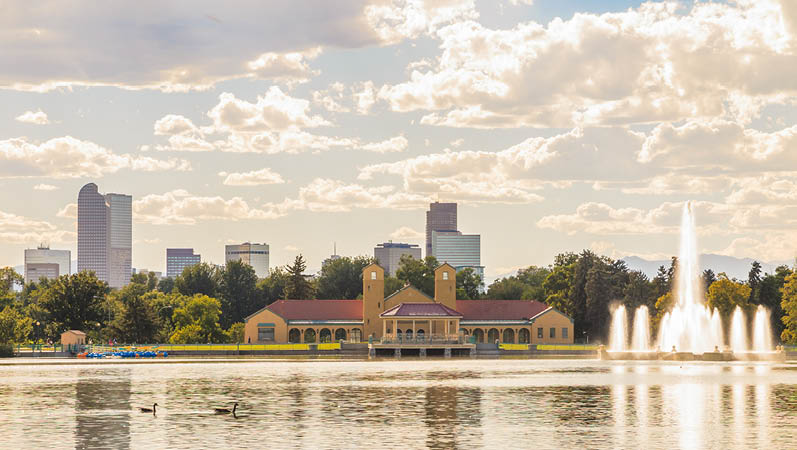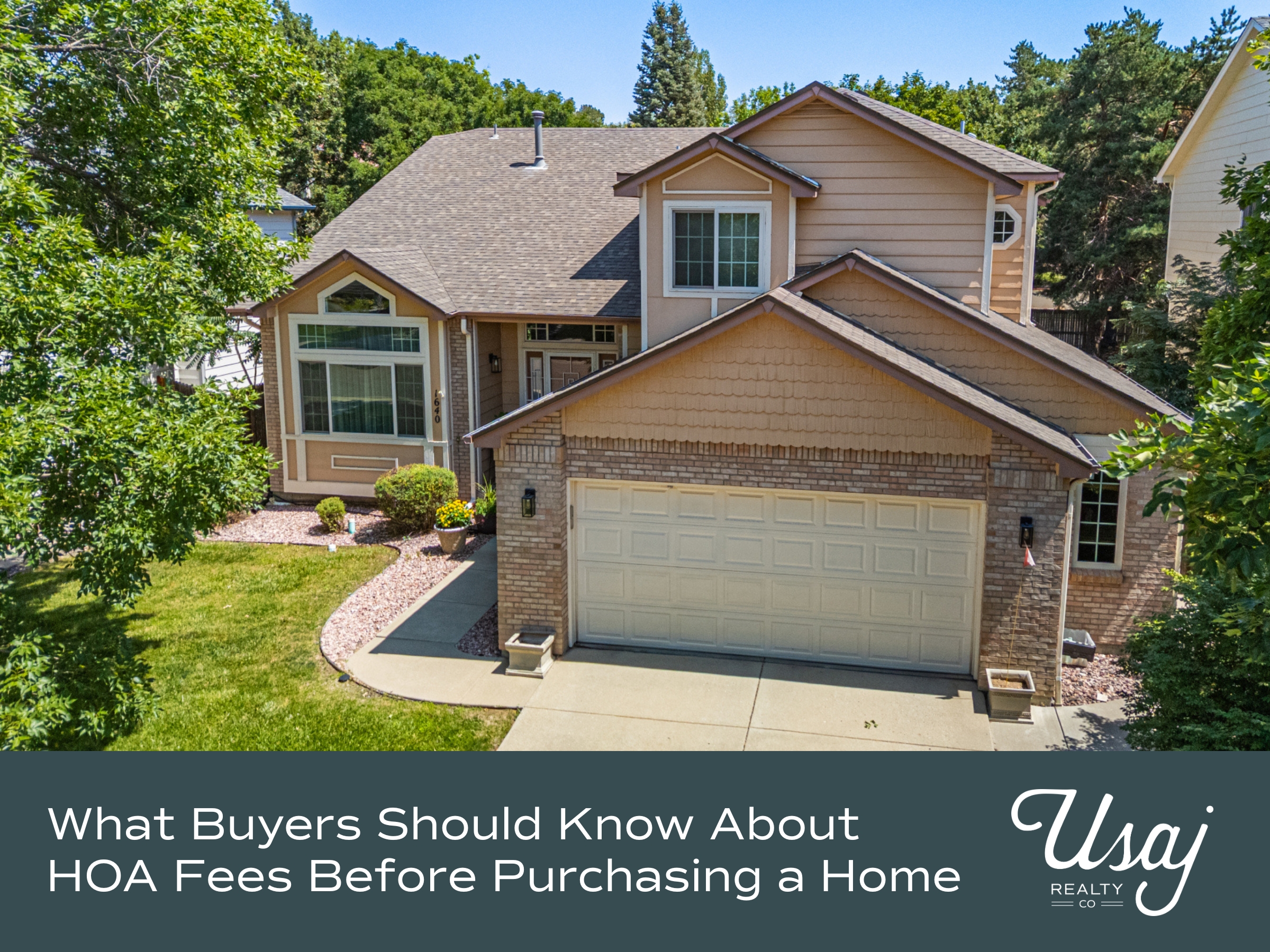What’s the Latest Outlook in Denver’s Real Estate?
Just like the early pioneers, there is rampant prospecting in Denver’s real estate. But the new “gold” comes in the form of a home, not the precious metal.
It’s been over 160 years since the great Gold Rush of the mid 1800’s, and houses are now the hot commodity as hunting for real estate has replaced the search for silver, gold and other chemical elements. With the average home in Denver now costing more than $500,000, becoming a homeowner in the Mile High City is the new gold standard.
When those early prospectors arrived during the summer of 1858, they started the movement that would bring tens of thousands of people to the area in search of riches. The South Platte River and areas beyond became home to tents, tepees, wagons, lean-tos and log cabins. Even though many of the newcomers never struck gold, many decided to call Denver their new home and staked claims to the abundant plots of land.
The original makeshift homes were replaced by a variety of architectural styles and soon the Mile High City became a burgeoning center of commerce. General William H. Larimer was instrumental in laying the foundation of the city of Denver and the historic buildings of Larimer Square and Lower Downtown are evidence of his vision.
From its dusty, desolate and meager beginnings, Denver has evolved into a cosmopolitan city that has shed its “cowtown” moniker. Tepees have been replaced by tony townhomes. Lean-tos now are fashionable lofts in LoDo. And where shantys once stood, you’ll now find completely updated Victorians, bungalows and Denver Squares. Many neighborhoods sport a complex mix of old and new, with the common thread being that practically any form of real estate is popular in Denver.
Denver’s Booming Real Estate
According to the Federal Housing Finance Agency, Colorado ranked fourth after the 1st quarter of 2018 in the home price index. Home values increased 3.37 percent which totaled 10.63 percent since the first quarter of 2017. That is consistent with the Denver Metro Real Estate Market Report, showing the average home selling for $449,736 in May 2017; now the price is $540,624. In fact, the home price index in the Denver-Aurora-Lakewood market has risen every quarter since the second quarter of 2011.
The demand for homes far outstrips the inventory and home builders cannot keep up. Many new communities in the Denver metro area offer multi-family residences; new single family communities tend to be located in the outlying sections of the Denver suburbs in virtually every direction. If you find new construction of single-family homes in the immediate Denver area, it comes with a big price tag. Case in point is the Marvella development, a Century Communities project that recently opened in Centennial near Orchard and Quebec. It features 70 homes starting in the upper $800,000 range.
For the last 10 years, people of all ages have been heading back into Denver’s neighborhoods. While the suburbs continue to attract families, many empty nesters, millennials and newcomers to Denver are attracted to the urban environment and all of what Denver has to offer. Whether the populace is interested in downsizing or want to be closer to work and the entertainment scene, city living has become the new norm.
However, Denver is now facing a dilemma with its available single family homes. When the transformation of the old Stapleton airport grounds began in 2001, it signaled the start of the largest home building project in the city. There are now over 7,400 single-family homes in the Stapleton neighborhood, and the last homes on the North End development are expected to be on the market in 2021. At that time, the development in Stapleton will be complete.
Likewise, homes in Lowry, located just south of Stapleton, is nearing its capacity as is Green Valley Ranch near Denver International Airport. At both locations, homes are expected to be spoken for in the next three to five years. For people wishing to live in a newer single-family home with a Denver address, the options are waning. The choices will ultimately be waiting to see if the city of Denver allows more development in the northeast corridor near the airport or scraping old homes and building new ones.
While the suburbs continue to expand and offer new single-family homes, Denver’s near future will lie with multi-family attached homes, condos and apartments at sites like Broadway Station (site of the old Gates Rubber Company at I-25 and Broadway) and the River Mile development at Elitch Gardens.
Across the board, an address in Denver is coveted. Regardless of whether you’re living in an inner city neighborhood, on the western fringes or along the Cherry Creek corridor, the common thread is the desire to live in the Denver city limits. And more often than not, there is easy access to the RTD light rail, bus lines or bike path for an easy commute to your place of work.

Importance of Public Transportation
There is no disputing the parallel between the increased population of Denver and economic boom, and the growth of RTD’s light rail projects. Akin to the early pioneers of Denver, the present day residents of the Mile High City are still recognizing the benefit of being a rail community, and in 2004 approved a sales tax increase to help fund further light rail development (FasTracks). From the original Central Rail Line that served Five Points through downtown to I-25 & Broadway, RTD now has the A line to Denver International Airport, B, C, D, E, F, H, L, R and W lines. With the 122 new miles of new light and commuter rails and 57 rail transit stations, RTD’s effort has also spawned business development and new places to live across the Denver metro area.
At nearly every station on any given line, you’ll find, at the very least, new apartment buildings and more often than not, restaurants, condominiums/townhomes and services. From Lone Tree to Lakewood to Union Station and many spaces in between, these new communities have been a boon to local economies. When Union Station was redeveloped and turned into a combination transportation center/retail/residential district, over $2 billion was spent in private investment. The Union Station now defines the Lower Downtown (LoDo) neighborhood and is a bustling area of the city.
According to Reconnecting America, a national nonprofit that integrates transportation and community development, transit-oriented development, or TOD, is a type of community development that includes a mixture of housing, office, retail and/or other amenities integrated into a walkable neighborhood and located within a half-mile of quality public transportation. Successful TOD provides people from all walks of life with convenient, affordable and active lifestyles.
Some of the benefits of TOD include:
- Reduced household driving and thus lowered regional congestion, air pollution, and greenhouse gas emissions
- Walkable communities that accommodate more healthy and active lifestyles
- Increased transit ridership and fare revenue
- Potential for added value created through increased and/or sustained property values where transit investments have occurred
- Improved access to jobs and economic opportunity for low-income people and working families
- Expanded mobility choices that reduce dependence on the automobile, reduce transportation costs and free up household income for other purposes

New Apartments Sustain Growth Across the Board
Even if you aren’t ready to buy a home of your own, the number of new apartments available to renters continues to grow. Denver recently scored a B+ from Apartment List’s Annual Renter Satisfaction Survey. The grade puts the city at No. 11 out of the top 50 largest cities in the U.S.
The third annual survey drew responses from more than 45,000 renters nationwide. Renters rated their cities on 11 factors including affordability, public transit, and weather. The four factors that have the greatest influence on overall satisfaction are safety, job opportunities, social life, and recreational activities.
Metro Denver has added $12 billion in apartments between 2000-2016, and construction of apartments have skyrocketed over the last decade. According to the Apartment Association of Metro Denver, a trade group representing apartment ownerships, there was a 38 percent increase in available apartments from 2016-2017. The group believes there would be 10,000-12,000 more apartments added to the market this year.
By contrast, the number of single- and multi-family housing permits continue to fall well short of the demand. According the U.S. Census Bureau, 17,197 housing units have been approved for construction in Colorado year-to-date (through April, 2018). This represents a 27 percent increase over the same time in 2017. But demand for homes far exceeds the inventory. During May, there were 7,748 new listings; many believe that number should be doubled to satisfy the number of people looking to buy a home.
Here are just a few of the new construction projects in the Denver area that include apartments and condos:
Market Station (redevelopment of RTD’s former Market Street Station. The project is slated to be completed in the summer of 2019 and takes up the entire city block block bounded by 16th, 17th, Market and Blake Streets). As Denver Infill reports, the project is made up of three buildings that will include a total of “370,000 square feet of development, featuring 90,000 square feet of office space, 85,000 square feet of retail/restaurant, and the balance as 225 apartment units.”
Zia, located in the Sunnyside neighborhood, “could add 431 residential units southwest of West 41st Avenue and Inca Street. The project calls for 119 condos, 312 apartments, as well as “7,500 square feet of ground-floor commercial space, work-from-home areas, a parking garage, a cross-fit style fitness center, a roof-top dog park, an outdoor lounge space and a pool.” (Denverite).
DriveTrain, located between Brighton Boulevard and Arkins Court in the RiNo neighborhood, will be home to 220 residential units, a 120 room hotel, creative office space, restaurant space, retail space, and an outdoor courtyard.
Denver Rock Drill will have 318,000 square feet of office, 65,000 square feet of retail, 180 residential units, and a 175-room hotel. It is conveniently located in between the RiNo neighborhood and Cole neighborhood.
The Quincy will be located at 999 17th Street and is a 359-unit apartment development.
Larimer Square will be adding two new buildings 60 feet from the storefronts, and will offer condos and apartment living.
9th & Colorado is an opportunity to live in a new neighborhood surrounded by some of Denver’s best neighborhoods and will offer more than 1,000 residential options, including for sale condominiums, rental apartments, 112 affordable housing units, and micro apartments for the space conscious home dweller.
Denver’s Neighborhoods Continue to Evolve
Growth of LoDo, Highland, RiNo, Globeville/Elyria-Swansea and the planning of Denver’s newest neighborhood, the River Mile, has solidified the “back-to-the-city” movement that began over a decade ago. Many young professionals, retirees and even families are choosing to live in the inner city in order to live close to work and take advantage of all of the city’s amenities. Whether you choose to rent or buy, the downtown area has plenty to offer. From high rise living to spacious lofts to family-friendly townhomes, the inner core of Denver is no longer reserved for just offices. People are taking advantage of new construction of multi-family living opportunities that are close to the city’s many amenities.
Globeville/Elyria-Swansea will be seeing big changes coming in the next few years. With the major projects of the National Western Center, Central 70 and the RTD stations, this historic neighborhood will be revamped and integrated into a unified community. According to the City of Denver, the plans will be guided by these key principles:
- A Strong Community – parks & open space, housing, jobs, and services
- A Connected Neighborhood – transit, automobile, bike and pedestrian networks
- A Healthy Neighborhood – clean air, odor reduction, noise control, ground pollution control and access to healthy foods
- A Unique Neighborhood – history, culture, and urban design
The proposed River Mile neighborhood would encompass 62 acres along the South Platte River and replace the existing Elitch Gardens along with many parking lots and empty space that currently exists. This area, officially called the Central Platte Valley Auraria District, has long been underutilized. It is home to more than 15 surface parking lots, many of which serve sports fans and sit empty during teams’ road trips and the offseason. Three light rail stations serve the area, but the stops are not pedestrian friendly, and as a result, are less useful than they could be.
Proposals for River Mile include a new street grid, pedestrian and bike bridges over the river and across the railroad tracks and interstate, riverfront parks, skyscrapers, multi-level parking structures, restaurants, stores, entertainment venues, and apartments and condos for up to 15,000 people. All of this would make for an urban neighborhood designed around walking, biking, and public transit, with parking maximums instead of minimums. The project could also include improvements to the river itself, such as dams, steps, docks, vegetation, and boating chutes.
Finally, the neighborhoods encircling the inner city are enjoying a renaissance of their own. With conveniently located RTD light rail stops as well as bus transportation, ride sharing, and even bike and scooter rentals, it’s easy to get in and out of central Denver. Demand for houses in the city limits has skyrocketed and the median price for real estate (over $400,000 for a single family home) speaks for itself.
For the last two years, Park Hill neighborhood has been selected as the top neighborhood in the Mile High City, appealing to singles and families alike. Located just east of downtown, Park Hill residents enjoy its small “downtown” area on Kearney Street as well as a small retail area on 23rd and Dexter and easy access to the Colfax corridor.
In addition, Park Hill will be welcoming a new shopping area at Oneida Park. Located on Oneida Street between 22nd and 23rd Avenues, this development will feature 16 businesses, an open courtyard and outdoor seating, a children’s playground and free off-street parking. The design will focus on bringing together residents of the neighborhood as well as visitors into a welcoming urban oasis. Plans include special events, live music, farmer’s markets and seasonal festivities.

How are Interest Rates Changing the Market?
While interest rates have climbed above the 4 percent level, homes sales are still strong across Denver. Its robust economy continues to fuel the real estate market and home sellers continue to see top dollar for their properties. The Denver Metro Association of Realtors provides a market report each month and home inventory is now at a three-year high. Although the average and median prices have dropped, there continues to be high demand for single-family homes in the $200,00-$399,999 range. The median price for a single family home in Denver continues to be around $450,000 and the condo market continues to outperform with a median price of $300,000.
Price point of properties is obviously a huge issue as are the higher interest rates. Potential buyers are hoping that sellers will start lowering the asking price of homes while still taking advantage of low interest rates. Historically, the interest rates of today are still exceptionally low. Furthermore, there are many low down payment options available. Both Fannie Mae and Freddie Mac now offer 3 percent down payment options and relaxed credit score requirements. Many of the available options target first-time home buyers with low- to moderate-income levels.
Since interest rates are always changing with the market, it’s good to sit down with a trusted lender to find out how to qualify to buy a home. It won’t cost you anything and you’ll be able to find out what kind of home you can afford. The worse case scenario is you’ll learn how to qualify for a loan in the future and be able to put together a savings plan to help achieve home ownership in the future.
How We Can Help
Regardless of the type of housing you choose, you’ll be in good hands with Usaj Realty. Founded in 2011, Usaj is ready to help you with finding the home that best fits your lifestyle. Whether you are drawn to urban living with a view of the mountains from a high rise condo in downtown or dream of a three-bedroom ranch in southeast Denver, the team at Usaj Realty will help you find a home that’s perfect for you or a growing family. There has never been a better time to buy a home in Denver!




